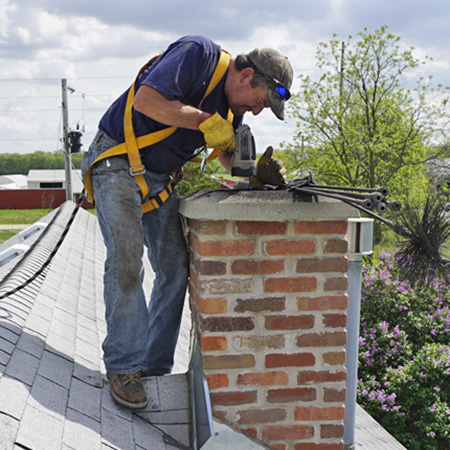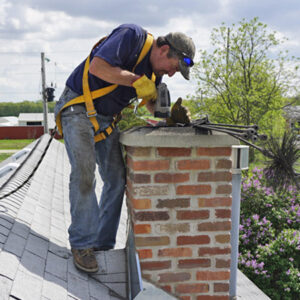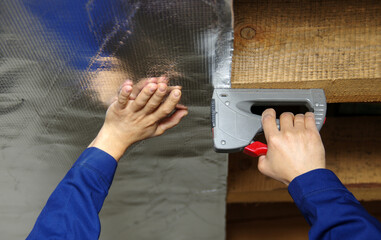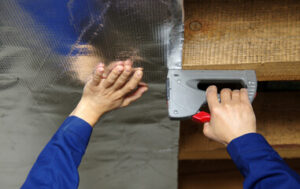In a market where facility executives are increasingly prioritizing longevity, durability, resilience, and energy efficiency, metal roofing is gaining momentum. Many of the myths about metal roofing have been dispelled, including that it is hot, noisy, or prone to rusting. The advantages of this material are undeniable. It can save energy costs, protect buildings in storm-prone areas, and qualify for the federal tax credit.
The durability of metal Roofing Columbus GA is one of its most important benefits. It can withstand nearly anything that a traditional shingle roof might encounter, and it is built to last decades longer than a shingle roof.
It is also fire-resistant and highly resilient against weather-related issues like hail, wind, and snow. Additionally, metal roofs reflect heat rather than absorb it, which can help lower a home’s cooling costs.
Another benefit of a metal roof is that it can add value to your property due to its strength and durability. Additionally, it is recyclable when it does eventually reach the end of its life cycle.
One drawback of a metal roof is its initial cost, which is typically higher than a shingle roof. However, the initial investment is worth it, as a metal roof can save you money in the long run due to its energy efficiency and longevity.
A metal roof’s lifespan depends on a number of factors, including the type of metal, the climate, and how it is maintained. For example, a standing-seam metal roof can last up to 75 years, while screw-down panel roofs last about 20–30 years.
Additionally, the longevity of a metal roof is affected by the type of underlayment used. Felt underlayment tends to deteriorate over time and needs to be replaced, while synthetic underlayment is more durable and can last up to 40 or more years.
Finally, the lifespan of a metal roof is affected by the quality of its installation and its maintenance. A poorly installed metal roof can have leaks, rust, and other problems that affect its performance and durability.
It’s important to have a professional install your metal roof to ensure that it is done correctly and can protect your home for as long as possible. In addition, regular maintenance can prevent the need for a repair or replacement.
Energy Efficiency
A metal roof can have a cooling effect that keeps energy costs down. Metal roofs are coated to reflect radiant heat instead of absorbing it, which minimizes heat gain and can save as much as 40% on energy costs in warmer climates, according to the Metal Roofing Alliance. It’s a great alternative to asphalt shingles, which tend to absorb heat and transmit it into the home, increasing energy bills.
Metal roofs are made of recycled materials, so they’re an eco-friendly choice for those concerned about the environment. Unlike shingle roofing, metal roofs are often installed over existing roofs, reducing waste in landfills. Moreover, they’re durable enough to stand up to the harshest of weather conditions, which can cause other types of roofs to deteriorate over time.
The unique atomic structure of metals gives them the ability to conduct thermal energy and emit it effectively. The same properties make them effective insulators, allowing homeowners to save on their energy bills all year. During the summer, metal roofs reflect radiant heat away from homes, which can save them up to 40% on air conditioning energy costs. In the winter, they also insulate homes to keep them warm and cozy without having to crank up their HVAC systems.
Many people have a strong desire to be environmentally conscious. However, when it comes to incorporating green practices into their lives and businesses, they need to choose the right products that are practical as well as meet their aesthetic preferences. Metal roofing meets all of these criteria and provides the durability and functionality that architects require.
Unlike conventional roofs, metal roofs start as flat sheets of metal, making them easy to cut into the shape and size needed for a structure. This allows architects to design buildings with a wide variety of shapes and angles, and they can use metal for structural applications as well as covering walls or walkways. In addition, architects can also choose from a large selection of colors and finishes to create an aesthetically pleasing building.
Installing a new metal roof is an ideal project for DIYers with some experience. However, beginners should hire a professional to reduce the risk of rookie mistakes that can lead to costly repairs or premature replacement. After installation, a homeowner should examine the entire roof to ensure that it’s finished properly and that there are no visible gaps or misalignments. Closure strips and ridge caps should be added to promote air circulation throughout the roof and protect the surface from harsh weather conditions.
Longevity
You’re more likely to see metal roofs on industrial and commercial buildings than residential structures, but that doesn’t mean they’re not a good option for homeowners. In fact, a metal roof will save you money on electricity costs and increase your home’s resale value, even though it can be more expensive upfront than some other roofing materials.
If you’re looking for a roof that can stand the test of time, then metal is a great option. Unlike traditional asphalt shingle roofs, which may last only 20–30 years, metal roofs can have an estimated lifespan of 40–70 years, depending on the material and location. However, the longevity of your metal roof will be impacted by factors like installation, ventilation, and weather conditions.
The good news is that if you are willing to commit to the maintenance and upkeep, you can enjoy the benefits of metal roofing for decades. You will have to clean your metal roof regularly and have it inspected for any signs of damage. It is also a good idea to trim any tree branches that come within 10 feet of your metal roof, as they can cause scratches and other damage.
Another important aspect of metal roofs is their durability and ability to withstand harsh weather conditions. During extremely hot temperatures, they ingest less heat than other roofing materials, which means that your AC system won’t have to work as hard to keep the house cool. Similarly, they can withstand heavy rains and snowfall with ease.
In addition to their durability and longevity, metal roofs are also eco-friendly. After they reach the end of their useful life, they can be recycled into other products.
Finally, if you choose the right color for your metal roof, it can look as stylish as the rest of your home’s exterior. Paint companies produce high-performance roofing coatings that can resist chalking, fading, and other types of color degradation. You can also select a color that will complement your home and blend in with your neighborhood. This will help to ensure that your roof will look as beautiful as the rest of your home and improve its curb appeal.
Appearance
For decades, metal roofs mainly meant corrugated panels that looked more at home on barns or sheds. They can still work well for this type of application, but newer materials and styles give designers and homeowners plenty more choices when it comes to matching the look of a metal roof with a particular home or neighborhood aesthetic.
Almost any color and finish that is possible for asphalt shingles can also be used on metal roofs. This means architects can design homes and businesses that blend in nicely with surrounding buildings or make a statement that stands out among the rest.
Some common types of metal roofing include standing seam, corrugated, and stone-coated steel panels. Each of these options has its own advantages and drawbacks, so homeowners should research each one to find the best option for their property.
A good place to start is by looking for roofing professionals who specialize in the style of metal roof you want to install. These experts can help you decide if a metal roof is right for your house and guide you through the process of getting quotes for your project.
Another important consideration is how durable the type of metal you select is. If you live in an area prone to heavy hailstorms, for example, you might need a roof with a Class 4 impact rating. This indicates that the roofing has withstood UL’s most severe testing standard—dropping a 2-inch-diameter steel ball from 20 feet—without tearing or cracking.
Even if you don’t live in an area prone to high levels of rain or snow, you might want to consider a metal roof that is designed to resist corrosion from the elements. Many types of metal roofing have been tested for their resistance to corrosion from a variety of chemicals, including chlorine and sodium hydroxide.
Most homeowners who choose to have a metal roof should take into account any homeowner’s association restrictions on the use of certain types of roofing materials. In addition to this, you should also consider whether a metal roof would clash with the architectural style of your home or community.




 Radiation barrier foil is designed to reflect radiant heat while providing strength and durability. Unlike conventional insulation products, radiant barrier foil does not compress when handled.
Radiation barrier foil is designed to reflect radiant heat while providing strength and durability. Unlike conventional insulation products, radiant barrier foil does not compress when handled.